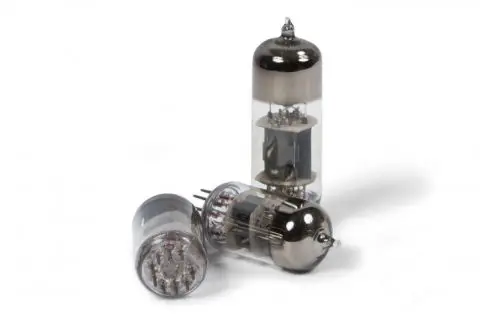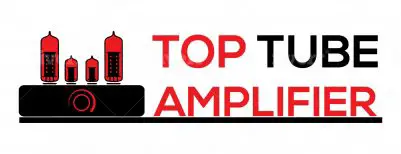This site isn’t called “Top Solid State Amplifier” so it’s probably clear what my preference is. But you may be asking yourself, “just why are tube amps so much better?” Well, I’m glad you asked! That’s a question commonly debated among those who need to use devices requiring amplification, especially musical instruments. Interestingly, tube amps had quite disappeared from the scene following innovations in the solid state amplifier, but have made a major comeback over the past decade.

So there must be something to give tube amps an edge over other kinds of amps. Here at Top Tube Amplifier, we have done here a detailed comparison to establish the reasons for tube amps being generally considered better than other amps.
Outstanding sound quality
At least for audio signals, you need to focus on the quality of the sound input delivered by your amp. Unless the amp is doing something dramatic to improve the sound quality, you might as well not go for such a device. What tube amps give, and the solid amps don’t, is excellent sonic quality – just ideal for musical instruments. No wonder, guitarists (and naturally guitar manufacturers) prefer the tube amp over other amps, each time, every time. You don’t want to have your guitar playing wonky with the notes, after all, do you?
Simpler construction
Another merit that tube amps boast of is the simplicity of the circuit, making its construction quite a breeze. So much so that guitarists and electrical hobbyists prefer to make their own tube amps rather than go for the mass produced variety that’s flooding the market these days. Even the number of components used in tube amps is relatively small. And this simplicity ensures minimal interference with the input signals, and relatively fewer chances of distortion or deterioration of the signal.
In addition, with fewer components, the chances of failure also get reduced, which means less chances of the amp ditching you just when you’re about to woo your audiences with an excellent guitar performance. In fact, tube amps tend not to deviate from the circuit design, enabling purer performance of your gadgets/instruments.
Better overload resistance
You’ll also find the overload resistance of tube amps much higher than that of other amps. The reason for this is the gradual onset of overload when the amp reaches its maximum power. Consequently, the distortion that occurs with increasing power load is of low even-order harmonic quality. And studies show that even-order harmonic distortion does not jar the ears as much as odd-order harmonic distortion, which the solid-state amps tend to create on reaching their maximum power. Since transistor amplifiers usually move towards their maximum power limit quite quickly, the distortion also goes up fast. This can lead to the destruction of the drivers of the loudspeakers in these devices.
Check out guitar amps for the difference
The difference in the distortion levels can easily be seen in guitar amps, where the design itself is such that the overload distortion is achieved with the help of the circuit in the output stage to deliver what guitarists call the `tone.’ While in a tube amp (I like the Monoprice tube amp),this tone enhances the amplification effect, it ends up destroying the speakers in the case of solid-state amps, which simply can’t withstand the distortion beyond a point. The way this works is through the production of a sound known as the third harmonic, which intrudes into the original sound to trigger a harsh audible effect.
In contrast, tube amps usually only create the second harmonic, which is almost inaudible, but at the same time, has the effect of making the sound seem fuller. Hence, you get the characteristic pleasant tone of tube amps, which make your guitar more musical, just the way it ought to be. What you get with a guitar or stereo tube amplifier therefore is a richer tone, which is music for your ears, and that of others around you too.
Tube amps deliver linear amplification
As you might know, tubes amplify the signal with the help of voltage variation while solid-state amplifiers or transistors operate through amplification of current. The linear amplification process involved in the functioning of tube amps doesn’t need as much negative feedback as transistors in order to make a linear circuit. This kind of circuit further helps in the reduction of distortion and also prevents slow-down of the amplifier. The sound quality is a direct result of the feedback level, with high negative feedback leading to dull and monotonous music and low or zero feedback, thus delivering more natural sound quality.
But are all tube amps good?
Now that is a moot question. Not all tube amps are good, nor are all solid-state amps bad. Certain varieties of music, in fact, demand the solid-state amp kind of sound with its odd-order distortion. And with some of the modern transistors actually copying the technological quality of tubes, you’ll come across certain varieties of solid-state amps that actually work almost as well as tubes, if not better.
Conclusion
Comparisons may sound tedious, but if it’s quality that you’re seeking in your devices requiring amplification, it makes good sense to make a comparison between the types of amps available to choose from (check out our list of the Bravo Audio Ocean for example). It seems tube amps do score over solid state kind of amps on many counts, not the least of them being their better sonic quality with minimum of distortion. No wonder the tube amps have once again started being used extensively, replacing the solid-states in many instances. However, as mentioned earlier, not every tube amp you come across may be as good as you expect it to be. Similarly, there are times when you may find the solid-state amps more suited to your needs, even for music.
